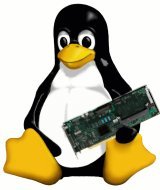
- #Hp smart array controller launch setup serial number#
- #Hp smart array controller launch setup driver#
- #Hp smart array controller launch setup windows#
By default, the RBSU runs in the English language.
For advanced users, to modify the server configuration ROM default settings, press F9 when prompted to enter the RBSU. During the initial server boot (POST), do one of the following:. The LED flashes green to indicate that power connection is established. The server automatically turns on after the power cord is connected. Connect the power cord to the AC power source. To secure the power cord, snap the clip into place. Open the power cord retaining clip, and then thread the power cord through the strain relief clip. Pay particular attention to the plug, electrical outlet, and the point where the cord extends from the server. Do not route the power cord where it can be walked on or pinched by items placed against it. Unplug the power cord from the power supply to disconnect power to the equipment. Plug the power cord into a grounded (earthed) electrical outlet that is easily accessible at all times. The grounding plug is an important safety feature. Do not disable the power cord grounding plug. WARNING: To reduce the risk of electric shock or damage to the equipment: Connect the other end of the Ethernet cable to a network jack. Connect one end of the Ethernet cable to the NIC 1 connector. The server supports the following Ethernet connectors located on the rear panel: For more information about Intelligent Provisioning drivers, firmware, and SPP, see the HP website. #Hp smart array controller launch setup driver#
The USB 3.0 driver is included in the SPP download when performing an Intelligent Provisioning-assisted system setup.
#Hp smart array controller launch setup windows#
Microsoft Windows Server 2008 SP2 (x86 and x86-64 editions).Furthermore, the following two OSs require the installation of the USB 3.0 device driver: These connectors are functional only after the OS loads. During the initial server setup or when configuring BIOS settings, connect USB devices to the USB 2.0 connectors. These connectors are functional even before the OS loads. The system ROM has inherent USB 2.0 support. One internal USB 2.0 connector on the system board.Four external USB 2.0 connectors, two each on the front and rear panels.The I/O connectors are color coded and are marked with icons.


For server‑specific information, see the HP ProLiant MicroServer Gen8 User Guide. The same information is printed on separate labels located on the rear panel.įor options installation information, see the documentation that ships with the option.
#Hp smart array controller launch setup serial number#
* The serial number/iLO information tag shows the server serial number and the default iLO account information. ** To identify components in a degraded or critical state, see the iLO/BIOS logs and the server troubleshooting guide. * Facility power is not present, power cord is not attached, no power supplies are installed, power supply failure has occurred, or the power button cable is disconnected.


Off = System in standby or no power presentįlashing red (1 Hz/cycle per sec) = System criticalįast-flashing red (4 Hz/cycles per sec) = Power fault** Power On/Standby button and system power LEDįlashing green (1 Hz/cycle per sec) = Performing power on sequenceįlashing green (1 Hz/cycle per sec) = Network active
Verify operating system support-For information about operating systems supported by ProLiant servers, see the operating system support matrices.įor more pre-installation information, see the HP ProLiant MicroServer Gen8 User Guide. Unpack the server shipping carton, and locate the materials and documentation necessary for installing the server. Select an installation site that meets the detailed installation site requirements described in the server user guide. For safety, environmental, and regulatory information, see Safety and Compliance Information for Server, Storage, Power, Networking, and Rack Products on the HP website. Setup Overview for the HP ProLiant MicroServer Gen8








 0 kommentar(er)
0 kommentar(er)
